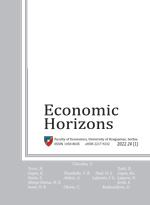PRACTICES OF PERFORMANCE MEASUREMENT IN COMPANIES IN THE REPUBLIC OF SERBIA
Miroslav Todorovic, Djordje Kalicanin and Aleksandra Nojkovic
Faculty of Economics, University of Belgrade, Belgrade, the Republic of Serbia
A large number of acronyms which indicate diff erent performance metrics, such as EBIT (Earnings Before Interest And Taxes), EBITDA (Earnings Before Interest, Taxes, Depreciation, And Amortization), ROIC (Return On Invested Capital), NPV (Net Present Value), EVA (Economic Value Added), IRR (Internal Rate Of Return), ROE (Return On Equity), ROA (Return On Assets) etc. are in use nowadays. In practice, managers cannot and do not want to apply all of these metrics and managers’ choice does not necessarily rely on what theory emphasizes as their advantages and disadvantages. We surveyed 64 CFOs in order to explore the corporate practice in the Republic of Serbia. The DCF-based capital budgeting metrics are dominant compared to the traditional metrics, and the one that is used the most is the profi tability index, only to be followed by the IRR and the NPV. The Payback Period is yet frequently used. The earnings-based corporate performance metrics are still the most important. However, the presence of EVA and balanced scorecard is not negligible. Large companies use them signifi cantly more than small companies. The orientation towards EVA and balanced scorecard increases with the internationalization of a fi rm as well. Finally, companies using sophisticated capital budgeting metrics are prone to using sophisticated corporate performance metrics.
Keywords: performance measurement, capital budgeting metrics, corporate performance metrics
JEL Classification: G31, M21
Economic Horizons, 2015, Vol. 17, No 1, pp. 45-58; Published online 21 April 2015; doi:10.5937/ekonhor1501045T




